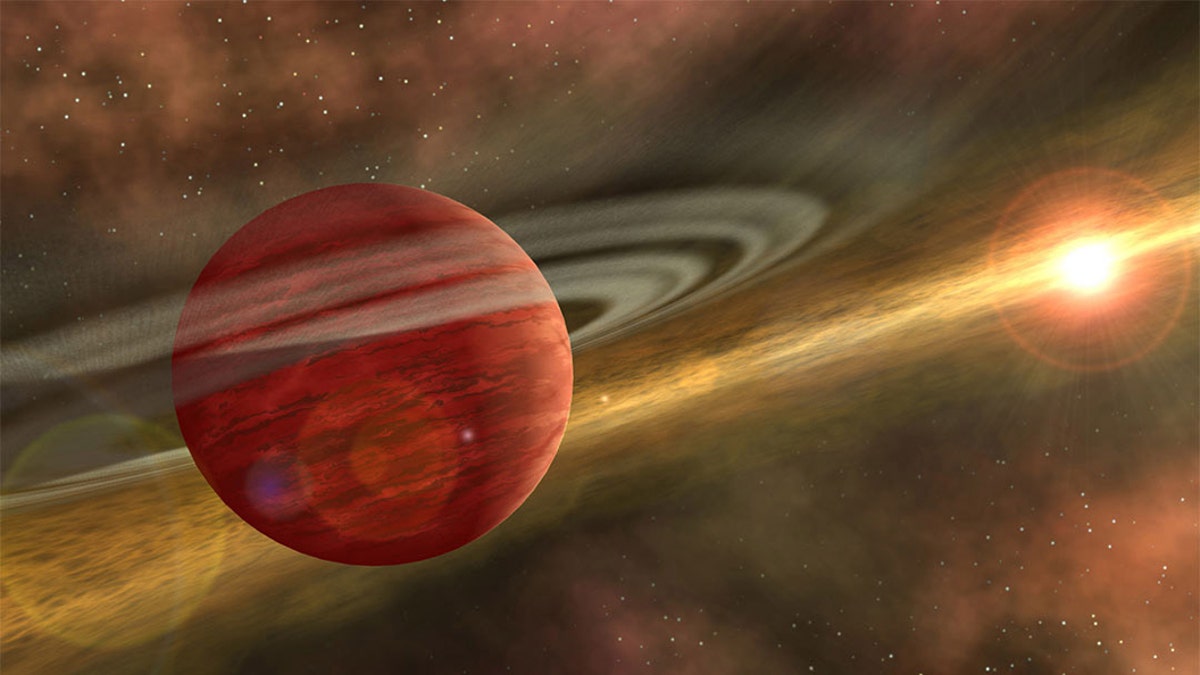Fox News Flash top headlines for Feb. 13
Fox News Flash top headlines are here. Check out what's clicking on Foxnews.com.
It might not be the same as finding Baby Yoda or "Baby Shark," but scientists have discovered a "baby giant planet" just 330 light-years from Earth.
Known as 2MASS 1155-7919 b, the exoplanet has a mass just 10 times the size of Jupiter, the largest planet in the Solar System. It orbits a star that is 5 million years old at 600 times the distance the Earth orbits the Sun, researchers said in a study published in the journal Research Notes of the American Astronomical Society.
“The dim, cool object we found is very young and only 10 times the mass of Jupiter, which means we are likely looking at an infant planet, perhaps still in the midst of formation,” said the study's lead author, Annie Dickson-Vandervelde, in a statement.

Artist's conception of a massive planet orbiting a cool, young star. In the case of the system discovered by RIT astronomers, the planet is 10 times more massive than Jupiter, and the orbit of the planet around its host star is nearly 600 times that of Earth around the sun. NASA/JPL-Caltech/R. Hurt (SSC-Caltech)
ALIEN PLANET IS SO HOT IT'S TEARING ITSELF APART
Dickson-Vandervelde continued: “Though lots of other planets have been discovered through the Kepler mission and other missions like it, almost all of those are ‘old’ planets. This is also only the fourth or fifth example of a giant planet so far from its ‘parent’ star, and theorists are struggling to explain how they formed or ended up there.”
2MASS 1155-7919 b is also "closer to Earth than any other of similarly young age found to date," the researchers added in the statement. A light-year, which measures distance in space, equals about 6 trillion miles.
Additional research is needed to learn how planets such as 2MASS 1155-7919 b have such expansive orbits around their stars, the astronomers added.
POSSIBLE 'SUPER-EARTH' PLANET DISCOVERED NEARLY 4 LIGHT-YEARS AWAY FROM EARTH
Maybe they'll even write a song about 2MASS 1155-7919 b, just like they did for "Baby Shark."
